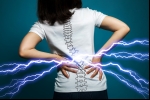Home » Blog
| Stem Cell, PRP, Acupuncture in Queens & Long Island, New York
Blog | Stem Cell, PRP, Acupuncture in Queens & Long Island, New York
As the novel coronavirus continues to infect people around the world, news articles and social media posts about the outbreak continue to spread online. Unfortunately, this relentless flood of information can make it difficult to separate fact from fiction and during a viral outbreak, rumors and misinformation can be dangerous. Here at Live Science, we've compiled a list of the most pervasive myths about the novel coronavirus SARS-CoV-2 and COVID-19, the disease it causes and explained why these rumors are misleading, or just plain wrong.
Read more
Some symptoms of COVID-19, the disease caused by the new coronavirus, overlap with those of the common cold, allergies, and the flu. That can make it tricky to diagnose without a test. Even President Donald Trump asked pharmaceutical executives earlier this month if the flu vaccine could be used to stop the coronavirus. (The answer is no, but it's still good to get a flu shot to lower the chance that you get the flu and take up crucial healthcare resources.)
Read more
What is Coronavirus disease 2019? Coronavirus disease 2019 (COVID-19) is a respiratory illness that can spread from person to person. The virus that causes COVID-19 is a novel coronavirus that was first identified during an investigation into an outbreak in Wuhan, China.
Read more
Lower back pain makes it hard to fall asleep, and it can startle you awake at any hour of the night. To help you reclaim your sleep schedule, here is a simple guide to sleeping with lower back pain: Sleep on your side to relieve pain from a pulled back muscle - One of the most common causes of lower back pain is a pulled back muscle, which occurs when a muscle in your lower back is strained or torn as a result of being over-stretched. Symptoms from a pulled back muscle typically resolve within a few days, but the intense pain can make it difficult to fall asleep at night. Worse yet, the longer you lie in the bed, the more deconditioned your body gets and the worse your symptoms may become.
Read more
Researchers don’t know exactly what causes some people to get migraines. Genes, changes in the brain, or changes in levels of brain chemicals could be involved. But it’s clear that certain things set off migraine attacks. Specific foods, hormonal changes, and stress are among the most often-cited migraine triggers. Weather can also be a factor.
Read more
Myofascial pain syndrome (MPS) is a fancy way to describe muscle pain. It refers to pain and inflammation in the body's soft tissues. MPS is a chronic condition that affects the fascia (the connective tissue that covers the muscles). It may involve either a single muscle or a muscle group. In some cases, the area where a person experiences the pain may not be where the myofascial pain generator is located. Experts believe that the actual site of the injury or the strain prompts the development of a trigger point that, in turn, causes pain in other areas. This situation is known as referred pain.
Read more
Nerve Pain Caused by A Spinal Problem - If you’re like most people, you might be surprised to learn that the nerve pain in your foot may be caused by a problem in an area as far away as your lumbar spine (lower back). This type of foot pain occurs when an underlying medical problem related to your lumbar spine provokes sciatica symptoms along the large sciatic nerve in your leg. In turn, these painful symptoms may travel all the way down the nerve into your foot.
Read more
Figuring out my migraine triggers has been tricky. The condition is unpredictable, and triggers can change over time. With so much uncertainty, it can be quite exhausting to make basic decisions. There is always a looming threat that any food I eat or activity I decide to partake in might trigger a migraine episode. It’s frustrating. Often, my triggers don’t make much sense! They can be strange and random. It can also be that the smallest, most specific thing will set off a migraine that has been brewing for days. I never really know what to expect What I do know is that I need to be especially critical about my decisions so that I don’t push my luck and set off my migraine symptoms.
Read more
What Causes Musculoskeletal Pain? - The causes of musculoskeletal pain are varied. Muscle tissue can be damaged with the wear and tear of daily activities. Trauma to an area (jerking movements, auto accidents, falls, fractures, sprains, dislocations, and direct blows to the muscle) also can cause musculoskeletal pain. Other causes of pain include postural strain, repetitive movements, overuse, and prolonged immobilization. Changes in posture or poor body mechanics may bring about spinal alignment problems and muscle shortening, therefore causing other muscles to be misused and become painful.
Read more
Herniated discs can cause a variety of different symptoms, but those symptoms can vary depending on where the disc herniation occurs in your spine. Below, we take a closer look at the symptoms of herniated discs based on where they develop in your back. For those of you unfamiliar with the sections of your spine, it can be broken down into three segments: The cervical, thoracic and lumbar portions of your spine.
Cervical. The cervical portion of your spine involves the first seven vertebrae at the top of your spine near your neck.
Thoracic. Below the cervical spine is the thoracic portion of your spine, which is home to the next 12 vertebrae.
Lumbar. Underneath the thoracic spine sits the lumbar portion of your spine, which involves the next five vertebrae.
Read more
Love this Post? Spread the World






















